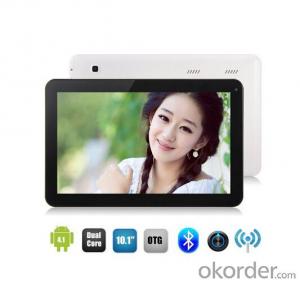Nexus Solar Inverter
Nexus Solar Inverter Related Searches
Best Inverter Solar Panel Solar Panel On Roof Rack Inverter To Solar Panel Ratio Solar Panel Decking Lights Solar Panel Inverter Box 1000 Watt Solar Panel Inverter 12 Volt Solar Panel Inverter Plastic Solar Lanterns Buy Solar Panel Inverter Solar Panel Inverter CostHot Searches
Type Of Inverter For Solar Types Of Inverter For Solar Used Solar Inverter For Sale Inverter Size For Solar System Solar Edge Inverter For Sale 5kw Solar Inverter For Sale Solar Inverter For Sale Solar Inverter For Battery Solar Inverter For Split Ac Solar Inverter For Laptop Solar Inverter For Fridge Solar With Inverter Price Solar Inverter With 2 Battery Solar Inverter Price In China Best Solar Inverter In China Solar Inverter Price In Dubai Solar Inverter Price In Uae Solar Inverter Price In Kenya Solar Inverter Price In Kerala Solar Hot Water Collectors For SaleNexus Solar Inverter Supplier & Manufacturer from China
Okorder.com is a professional Nexus Solar Inverter supplier & manufacturer, offers integrated one-stop services including real-time quoting and online cargo tracking. We are funded by CNBM Group, a Fortune 500 enterprise and the largest Nexus Solar Inverter firm in China.Hot Products
FAQ
- Yes, there are several safety considerations when installing a solar inverter. First, it is important to ensure that the installation is carried out by a qualified professional who is trained in handling electrical systems. This helps minimize the risk of electric shock or fire hazards. Additionally, proper grounding and insulation must be implemented to prevent electrical faults. It is also crucial to follow the manufacturer's guidelines and local electrical codes to ensure the safe and efficient operation of the inverter.
- To calculate the payback period for a solar inverter, you need to divide the initial cost of the inverter by the annual savings it generates. The payback period is the amount of time it takes for the cumulative savings to equal the initial cost.
- The maximum power capacity that a solar inverter can handle depends on its specific model and specifications. In general, solar inverters can handle power capacities ranging from a few hundred watts to several megawatts, catering to various residential, commercial, and utility-scale solar installations.
- The role of an anti-islanding feature in a solar inverter is to ensure the safety of utility workers during power outages. It detects when the grid goes down and immediately disconnects the solar system from the grid to prevent the flow of electricity back into the grid. This prevents the potential danger of utility workers being exposed to live electricity while working on the grid.
- To calculate the power loss in a solar inverter, you would subtract the output power of the inverter from its input power. The input power can be determined by measuring the DC current and voltage at the input, while the output power can be determined by measuring the AC current and voltage at the output. The difference between the input and output power represents the power loss in the solar inverter.
- Temperature has a significant impact on the performance of a solar inverter. As temperature increases, the efficiency of the inverter tends to decrease. This is primarily due to the fact that high temperatures can lead to increased resistive losses within the inverter's components, resulting in reduced overall efficiency. Additionally, excessive heat can cause the inverter to experience thermal stress, leading to potential malfunctions or even failures. Therefore, it is crucial to consider temperature management and cooling measures to optimize the performance and lifespan of a solar inverter.
- The efficiency of a solar inverter refers to the percentage of solar energy that is converted into usable electricity. It is an important factor as higher efficiency means more energy is produced, reducing the overall energy loss. The efficiency of a typical solar inverter ranges from 95% to 98%, with some advanced models even surpassing 99%.
- Solar inverters commonly use several communication protocols to enable communication with other devices or systems. Some of the most frequently employed communication protocols in solar inverters include: 1. Modbus: Modbus is an extensively utilized communication protocol for industrial devices, including solar inverters. It facilitates the transmission of data between the inverter and other devices, such as monitoring systems or data loggers. Modbus is well-regarded for its simplicity and flexibility, which contribute to its popularity in the solar industry. 2. SunSpec: SunSpec is a communication protocol specifically designed for the solar industry. It establishes a standardized means for solar inverters to communicate with other devices, such as smart meters or monitoring systems. SunSpec supports both wired and wireless communication, allowing for effortless integration of solar inverters into larger energy management systems. 3. CAN bus: CAN (Controller Area Network) bus is a widely employed communication protocol in various industries, including automotive and industrial applications. It is a robust and reliable protocol that enables high-speed communication between devices. Some solar inverters employ CAN bus to communicate with other devices or systems, ensuring a dependable means of data transfer. 4. Ethernet: Ethernet is a prevalent communication protocol in the IT industry and is also utilized in certain solar inverters. By utilizing Ethernet, solar inverters can communicate with other devices or systems over a local area network (LAN) or the internet. Ethernet offers high-speed communication and can accommodate various communication standards, making it a versatile option for solar inverters. It is essential to note that different solar inverter manufacturers may employ different communication protocols or a combination thereof. The selection of a communication protocol depends on factors such as the specific requirements of the system, compatibility with other devices or systems, and the desired level of integration.














































